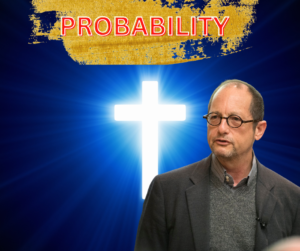Image by Lumo Project.
The Argument From The Criterion Of Embarrassment
A common argument for the historicity of the empty tomb of Jesus is that all four gospels feature women as witnesses to the empty tomb, and women were (A) considered second class citizens in both first century Jewish and pagan circles, and (B) they were considered unreliable witnesses. We know this, for example, from Talmud Sotah 19a which says “Sooner let the words of the law be burnt than delivered to women“! The Talmud also contains a rabbinic saying that goes like this: “Blessed is he whose children are male, but woe to him whose children are female”! Josephus wrote: “But let not the testimony of women be admitted, on account of the levity and boldness of their sex, nor let servants be admitted to give testimony on account of the ignobility of their soul; since it is probable that they may not speak truth, either out of hope of gain, or fear of punishment.” (Antiquities, 4.8.15).
Women were (A) second-class citizens, and (B) considered to be so untrustworthy that they couldn’t even stand as witnesses in a court of law! In light of this fact, I and many other New Testament scholars and apologists have argued that if the gospel authors were making up the empty tomb narrative, they would have male disciples like Peter or John discover the empty tomb. The fact that is is women rather than men who are the first discoverers of the empty tomb is best explained by the fact that they really were, and the gospel authors faithfully recorded what was for them a rather awkward and embarrassing fact.
To make women your first witnesses to the empty tomb would be to insert words into the mouths of witnesses who would not be believed. Therefore, by the principle of embarrassment, we have good reason to believe the tomb was empty.
The Cultural Context Objection
The most common way I’ve seen skeptics try to get around the force of this argument is to say that women being the ones to go to the tomb would make the most sense culturally and that it would make no sense for men to go to the tomb, and therefore, to make men be the first witnesses to the empty tomb would actually make their narratives even far less credible, both back then as well today. Moreover, women were represented and treated quite well in the early Christian communities, so it’s not implausible that they would have included women in the story. Advocates of this counterargument include the YouTube atheist Paulogia as well as agnostic New Testament Scholar Bart Ehrman. [1]See William Lane Craig, The Reasonable Faith Podcast, “A YouTube Objection To The Resurrection, PART 2” — … Continue reading. Ehrman also writes “Preparing bodies for burial was commonly of work of women, not men. And so Why wouldn’t the stories tell of women who went to prepare the body? Moreover, if, in the stories, they are the ones who went to the tomb to anoint the body naturally they would be the ones who found the tomb empty.” [2]In “How Jesus Became God”.
My Response
I’ve never found this to be a convincing argument against the Women-At-The-Tomb argument. Very recently on my page, I was arguing with a Deist-turned-agnostic-turned-Deist I’ve been evangelizing for the last 5 years. [3]If you’d like to follow our public conversation, you can click the link here –> … Continue reading He brought up some of the similar points to Ehrman. My response were the following
1: Even if it culturally made sense for women to visit the tomb, it was still awkard to have women be your chief witnesses to the empty tomb. And there were still ways to avoid this awkwardness. One way would be to have men accompany the women. All sorts of reasons can be made up for why at least one man would have gone along. Maybe they wanted protection from bandits, or maybe the women didn’t consider themselves strong enough to roll the stone away, and were unaware of the guards at the tomb. The gospel authors could have invented all these reasons for why, say, Peter would have gone along. For example, Matthew could have written “And Mary Magdalene and some other women went down to Jesus’ tomb early in the morning to accompany the body. Simon Peter and his brother Andrew accompanied them because the women were fearful of bandits.” or “…because the women needed help rolling the stone away.”
2: An Empty Tomb discovery narrative isn’t necessary at all. The gospels could have just had the risen Jesus appear to the apostles first, and then, when they doubted if Jesus really rose, Jesus could take them to the tomb, gesture toward it, and say “You see I was dead, and behold, I am alive forever. See the place where they laid me.” This way you can get the empty tomb in the narrative, but without having anyone, man or woman, go to it and just so happen to find it empty.
And as for women being well represented and more highly respected within the early Christian church, can we remember that the apostles were very evangelistic? They weren’t just repeating these stories amongst themselves in their small little echo chambers. They were telling others about what happened. The fact that women were held in high esteem within Christian circles doesn’t mean diddly squat when you’re witnessing to pagan Gentiles and non-Christian Jews who did not have the same view of women. Indeed, the early church critic Celsus used the women being the first to see the tomb empty as a point of ridicule.
You might say “Well, it’s not that bad because they had male witnesses they could appeal to too.” That’s what my deist-turned-agnostic-turned-deist friend said. The problem though is that most embarrassing things in the gospels can be rebutted or explained. That they can be explained and don’t pose insurmountable problems for their narrative doesn’t make these details any less awkward. Yes, an evangelist could tell his audience “Yes, women were the first on the scene, but don’t worry, Jesus appeared to many men as well.” That is true. But wouldn’t it just be easier to craft the story in such a way so that objections like this wouldn’t even need to be answered in the first place? Why go through the trouble of explaining why Jesus cried out “My God! My God! Why have you forsaken me?” (Matthew 27:46) or Jesus’ appearance faltering faith in the Garden of Gethsemane (Matthew 26:36-46), Jesus seemingly calling Peter Satan when Peter rebukes Jesus after predicting his death (Matthew 16:23), etc. etc. when all a fabricator has to do is just write the story a bit differently? Sure, you can explain that “Oh, but Mr. Celsus. You’re making a bad faith argument. We have male witnesses to appeal to as well. Women aren’t our only witnesses.” You can explain “Jesus was quoting Psalm 22:1 in order to draw attention to the fact that he’s fulfilling even more messianic prophesy” (because when you read Psalm 22, it looks strikingly similar down to the smallest details of what happened to Jesus during his crucifixion). You can explain “Jesus wasn’t actually calling Peter Satan. He was referring to the entity who was influencing him at the time.” Embarrassing details don’t present insurmountable hurdles for Christianity. It didn’t present death knell objections that the apostles couldn’t handle. But again, I ask you, rather than go through the trouble of responding to these objections, rather than go through the trouble of explaining these awkward facts, why not exclude them altogether? After all, if you’re just making it up and you’re not telling what actually happened, you should be free to tell the story any way you want!
Is the argument from women at the tomb and the criteria of embarrassment a slam dunk argument for the historicity of the tomb? No, of course not. History doesn’t deal in silver bullet arguments. As I told my non-Christian friend, “If you want proof, go to mathematics.” Do I think that this makes the empty tomb more probably historical than not? You bet!
There’s just no reason why, if you were fabricating a story about a risen hero, you’d CREATE objections you would inevitably have to respond to. The only reason you’d include details that you just know you’re going to have to explain is that things actually happened and your commitment to truth supersedes your dread of having to deal with all of the questions and objections. The gospel authors were committed to telling the truth, so they were like “Well, we’ll have to deal with this when we take the story out to the world.”
Conclusion
The argument for the empty tomb from the criteria of embarrassment still stands. I consider it one of the strongest arguments for the historicity of the empty tomb right up there with The Jerusalem Factor argument and the fact that it is multiply attested in all four gospels (See my article “The Evidence For Jesus’ Resurrection – Part 4: The Empty Tomb” –> https://cerebralfaith.net/the-evidence-for-jesus-resurrection_27/)). In fact, of this argument, Dr. William Lane Craig said “The discovery of the tomb by women is one of the features that has been most persuasive to modern scholars in coming to regard the empty tomb as a historical fact.” [4]See William Lane Craig, The Reasonable Faith Podcast, “A YouTube Objection To The Resurrection, PART 2” — … Continue reading
References
| ↑1 | See William Lane Craig, The Reasonable Faith Podcast, “A YouTube Objection To The Resurrection, PART 2” — https://www.reasonablefaith.org/media/reasonable-faith-podcast/a-youtube-response-to-the-resurrection-part-two and Bart Ehrman in “How Jesus Became God” |
|---|---|
| ↑2 | In “How Jesus Became God” |
| ↑3 | If you’d like to follow our public conversation, you can click the link here –> https://www.facebook.com/cerebralfaith/posts/pfbid0WnqS6vA1mNz94qXm9XQpuXsYNXpT3133ZAXmidEA6sWsBaWvvUFFs3DqhWYzjxw1l |
| ↑4 | See William Lane Craig, The Reasonable Faith Podcast, “A YouTube Objection To The Resurrection, PART 2” — https://www.reasonablefaith.org/media/reasonable-faith-podcast/a-youtube-response-to-the-resurrection-part-two |
Discover more from Cerebral Faith
Subscribe to get the latest posts sent to your email.




